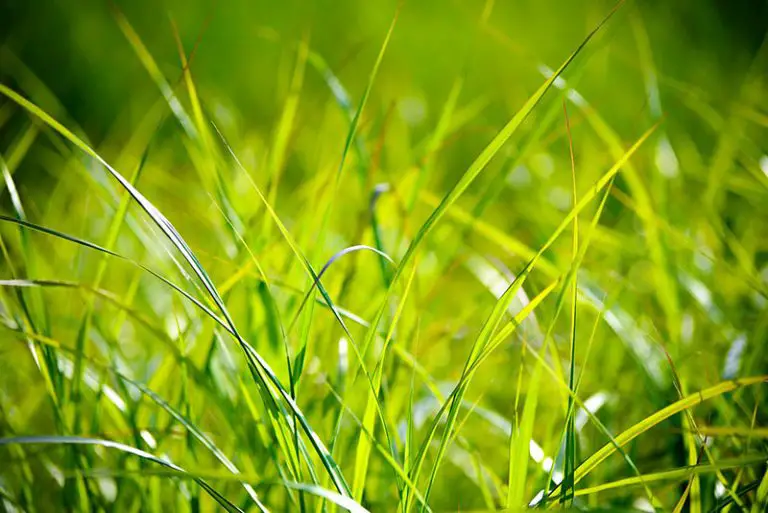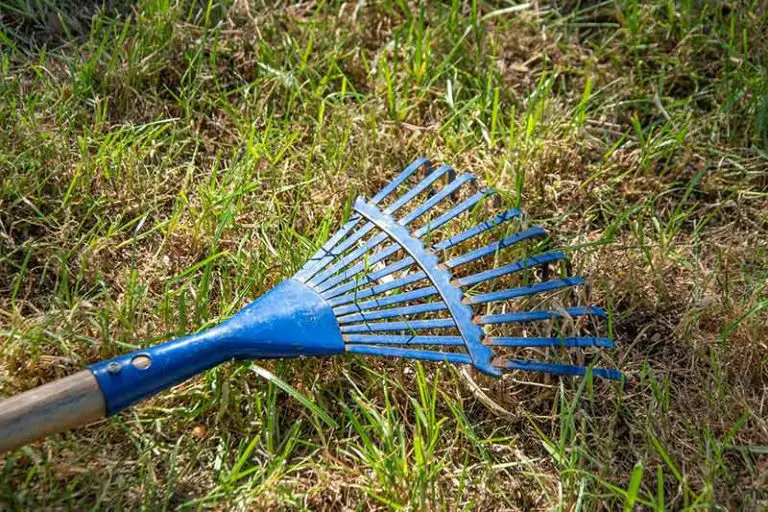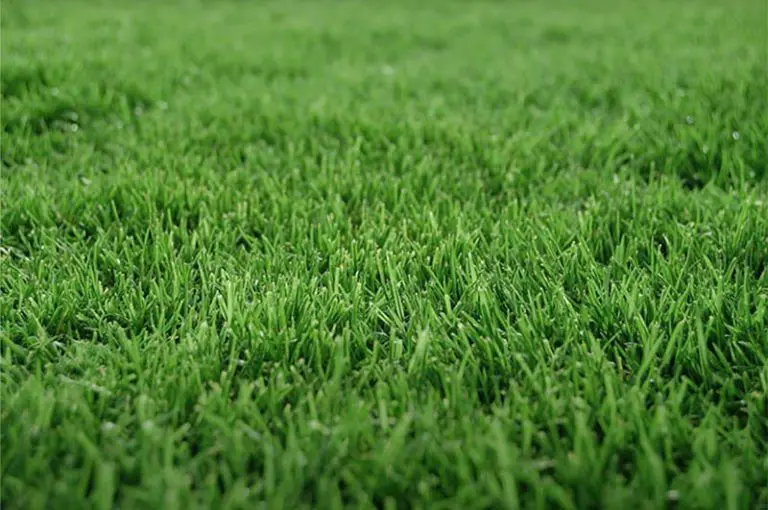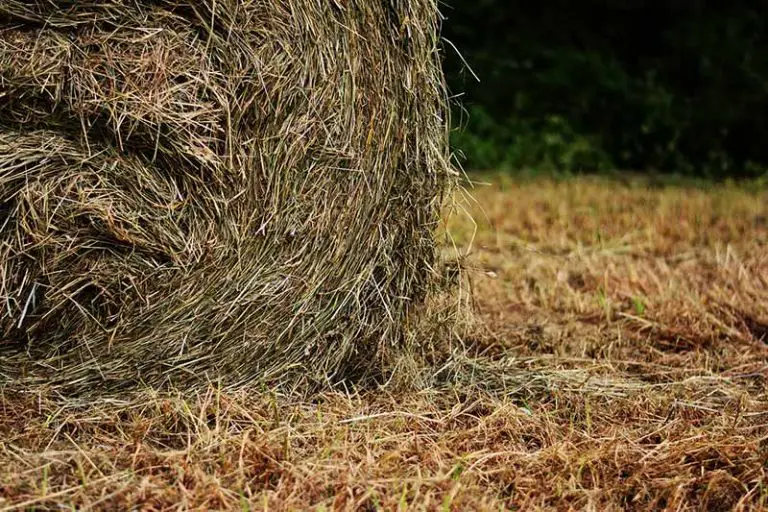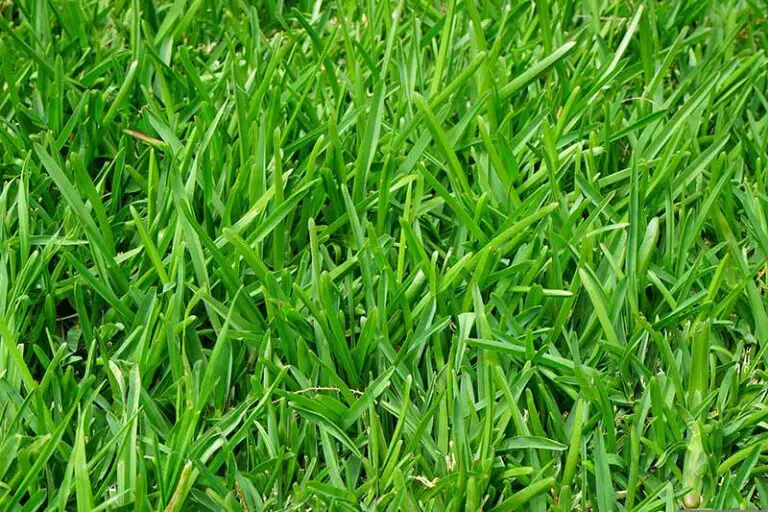Overseed Your Lawn Without Aerating: A Step-by-Step Guide
Lawn aeration is a common practice to carry out before the overseeding process. Aeration is used to break up soil compaction and thatch, in addition to protecting the seed from being blown or washed away. However, lawn aeration is laborious to carry out and not entirely necessary when overseeding your lawn.
It’s possible to overseed your lawn without aerating by preparing the lawn for planting using alternative methods. These include mowing the grass short and detaching the lawn with a rake before adding your seed. After overseeding, you can add a layer of mulch to keep the seeds in place.
What is Overseeding?
Overseeding is the process of adding more grass seed to an already-established lawn without removing any of the turf. It’s an easy and effective way to revive a lawn by filling in bare spots with new growth. This will improve the density of your turf and enhance its overall appearance. If your lawn looks worn out, requires more water and fertilizer to thrive, or is prone to pests and fungal diseases, it will benefit greatly from overseeding.
What is Aeration?
Aeration is a lawn care practice that involves breaking up soil compaction to create new pathways for air, water, and nutrients to circulate the turf. The most effective way to aerate a lawn is using a core aerator; this is a machine that pulls plugs of soil from the turf to leave behind holes that act as the new pathways.
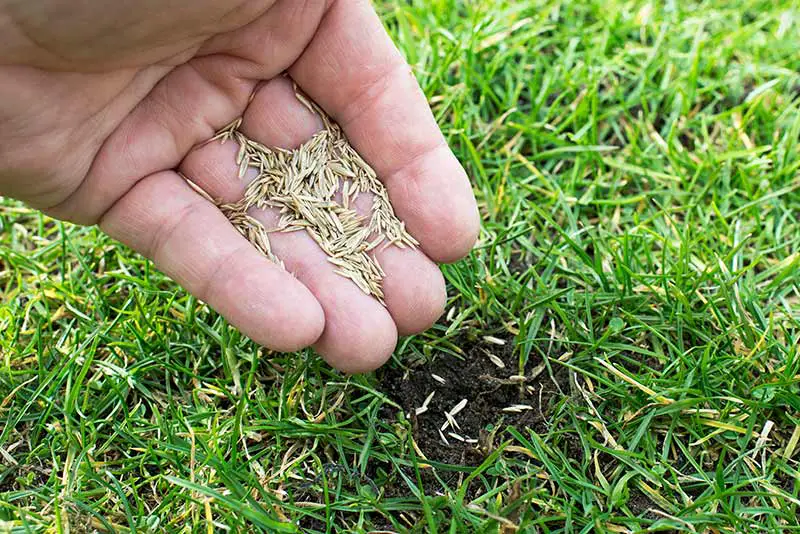
Is it Necessary to Aerate Before Overseeding?
While it is a recommended practice, it isn’t necessary to aerate before overseeding your lawn.
Aeration is often recommended as part of the overseeding process to improve its results; by aerating your lawn first, the holes left behind enable the grass seed to fall deeper into the soil. This will ultimately improve the results of the seeding process as it provides the seeds with more protection against being eaten by birds or blown away. The aeration process also helps to break up soil compaction; this enables your grass plants to grow deeper roots and access more nutrients and water in the turf.
However, lawn aeration can be a laborious, time-consuming process. While you can use a pitchfork to aerate your lawn, this method doesn’t provide the best results. The best equipment for aerating, core aerators, can be difficult to operate; they can also be costly to rent or purchase. It’s also necessary to locate inground sprinklers and utility lines to avoid accidental damage during aeration. If you’d rather skip the hassle of this process, you can overseed your lawn without aerating it; we have explained how later in this article.
When is the Best Time to Overseed?
Generally speaking, the best time to overseed your lawn is in the late summer to early fall. Conditions at this time of year are ideal for optimal seed germination and growth. We have broken down the effects of the seasons on the overseeding process in more detail below.
Overseeding in Spring
Overseeding in the spring is possible, but it is less favorable than overseeding in the fall.
Spring overseeding increases the risk of weather-related events that can impact your grass’ growth, such as heavy rains or unexpected high temperatures. The overseeding process will also be impacted by any preemergent herbicides you add at this time of year to treat crabgrass or broadleaf weeds.
If you overseed in spring, avoid using weed killers on the lawn for at least 4 to 6 weeks after planting. Don’t attempt to overseed if you have recently treated the lawn with a preemergent herbicide, as this will kill your seeds.
Overseeding in Midsummer
It isn’t recommended to overseed your lawn in the height of summer.
Choosing to overseed your lawn in the summer will leave your young grass plants vulnerable to the high temperatures at this time of year. They will be more likely to suffer from heat and drought, lawn disease, and will have greater competition from weeds. For success from summer seeding, meticulous watering and adequate weed control are vital.
Overseeding in the Late Summer to Early Fall
The best time to overseed your lawn is in the late summer to early fall.
At this time of year, the soil and air temperatures are ideal for seed germination and growth. Proper aftercare in the weeks following seeding, including sufficient watering and fertilization, will ensure that the new growth is well-established before the winter. This time of year is also ideal for overseeding as there is much less competition from weeds.
Overseeding in Winter
You can overseed in the winter as an alternative to spring overseeding.
This method is known as ‘dormant overseeding’, as the seed will remain dormant until temperatures are warm enough for germination. For this method to be successful, there need to be good snow cover during the winter; this prevents the seed from being washed or blown away and ensures that it doesn’t begin to germinate too early.
Note: Another factor that you should consider when deciding when to overseed is the grass type that you’re planting. Cool-season grass types thrive in lower temperatures, while warm-season grasses require warmer temperatures to grow. Make sure you plant your grass seed at the correct time of year for its species for optimal growth.
How to Overseed Lawn Without Aerating
It’s possible to overseed your lawn without aerating, providing you follow the proper alternative method. This section details a step-by-step guide on how to overseed your lawn without aerating it for best results.
1. Mow the Grass Short
Before overseeding, you should start by mowing the grass as short as possible. Adjust your mower deck height settings to cut the grass between 1 and 2 inches high.
Mowing the grass short is particularly important when attempting to overseed without aerating for a few reasons; it allows sunlight to reach the soil surface for it to trigger the germination of your new seeds; once they germinate, the seeds then have enough space to access nutrients and water.
Make sure to attach a grass bag to your mower to catch the clippings as you mow.
2. Loosen and Prepare Soil
As you aren’t aerating the lawn, you’ll need to loosen the soil using an alternative method of dethatching before overseeding.
Dethatching is necessary to break up the thatch layer, i.e. the layer of dead plants and grass that sits between the soil surface and the lawn. If this layer is too thick, it prevents the grass seed from reaching the soil surface. Aerating the lawn usually takes care of the thatch layer; overseeding without aerating means you’ll have to specifically dethatch the lawn.
With a metal dethatching rake or dethatcher, use the rake to dethatch the lawn by dragging it across the soil surface. Dethatch the lawn in this way until you have removed the dead plants and grass clippings. Collect up any other debris like large rocks or sticks at this stage too.
3. Overseed the Lawn
Once you have prepared the lawn, you can start overseeding.
Make sure that you’re sowing a grass seed compatible with your climate and the existing grass on your lawn. Also, take into consideration whether you need a shade-tolerant grass variety for areas of the lawn that see less sun.
Look at the packaging of your chosen seed to find out its particular seeding rate as rates vary between blends. Divide the seeding rate in half, and set your spreader accordingly. Start spreading the seed by walking around the perimeter of the lawn. Then, walk in even rows to apply the first half of the seed to the lawn.
After covering the lawn in one direction, make a second pass by walking in lines perpendicular to the first pass. Continue until you have covered the whole lawn in both directions and have applied the full recommended amount of seed.
4. Rake in Seeds
After you finish the seeding process, use a rake to gently work the seeds into the lawn. This will help the seeds to settle in the soil, protecting them from being blown or washed away, or eaten by birds. It’s important not to rake too hard otherwise you may end up with bare patches or areas where the seed is too concentrated.
4. Add Fertilizer After Overseeding
Now is a good time to add a starter fertilizer to the lawn.
Starter fertilizers have the best lawn fertilizer ratio for new grass; in other words, they contain the ideal balance of nutrients to support grass seedlings at these early stages of growth. Lawn fertilizer ratios are listed on the packing of each product.
Look for a starter fertilizer that has a ratio of 10-10-10. This is a well-balanced fertilizer ratio that provides equal parts nitrogen, phosphorus, and potassium to soil. These nutrients will support the healthy growth of your newly sown seed, as well as enriching the existing mature grass. Refer to the instructions for your chosen product to know how much fertilizer to use; generally speaking, you’ll need to apply 1 to 2 lbs. of fertilizer per 1,000 square feet of lawn.
5. Water in Grass Seed
Finally, you should give your overseeded lawn a light watering to trigger germination. Water the lawn so that the top 1 to 2 inches of soil are moist without being sodden. You’ll need to maintain this level of moisture consistently throughout the first two weeks of germination; do so by watering frequently and lightly.

